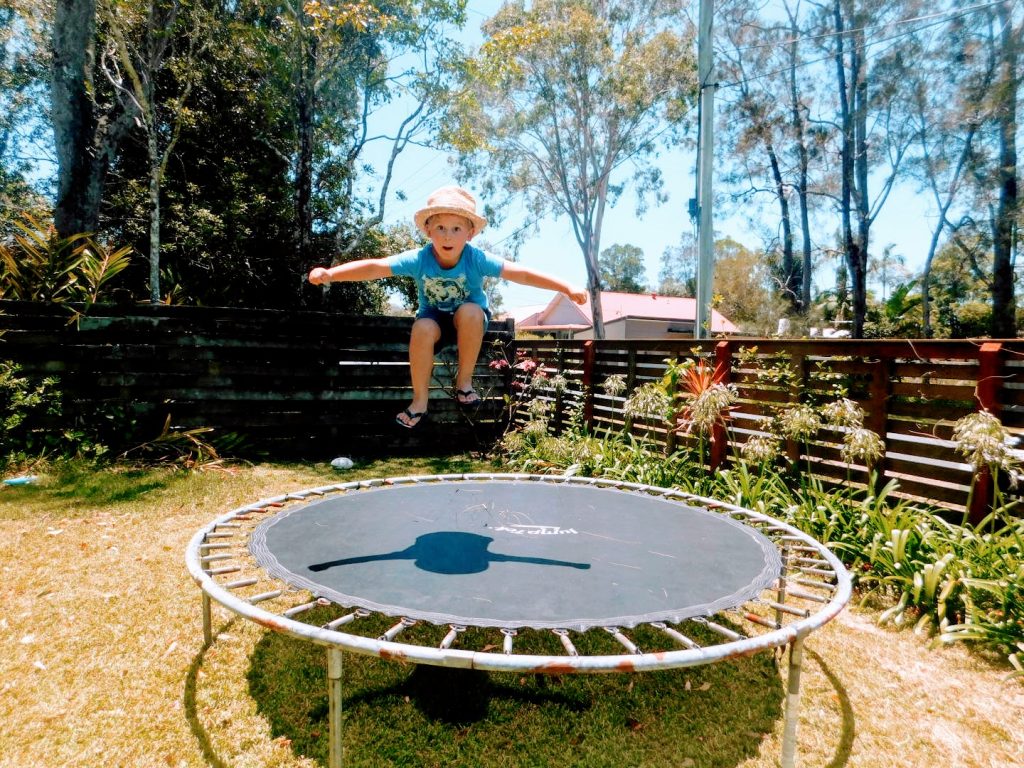Author: Emily-Kate Pfeiffer, Paediatric Occupational Therapist
4 min read
Proprioception is a crucial sensory system that enables us to sense the position and movement of our joints, along with the perception of force. This ability helps us navigate our surroundings safely, improving our sense of body awareness and promoting regulation. As a paediatric occupational therapist using a neurodevelopmental and neuroaffirming approach, I believe it’s important to find fun and easy ways to boost proprioception throughout the day. Below are ten simple activities that you can seamlessly incorporate into your child’s routine to increase proprioceptive input.

1. Animal Walks
Animal walks are a fun way to combine imaginative play with proprioceptive input. Encourage your child to move between rooms using an animal walk. They could crab walk to the kitchen for breakfast or slither like a snake to the bathroom to brush their teeth. These walks help build body awareness and strengthen muscles.
2. Wheelbarrow Walks
This is another playful activity that can be done during daily transitions. Have your child hold their body up with their arms while you or a sibling hold their legs—much like a wheelbarrow. Not only does it build upper body strength, but it also increases proprioceptive input. For extra fun, try wheelbarrow races!
3. Kicking a Soccer Ball
Kicking a soccer ball is a great way for kids to develop motor control and get proprioceptive feedback. Whether they’re aiming for a goal, hitting a target, or kicking against a wall, this activity enhances coordination and can be done indoors or outdoors.
4. Bowling
Set up a simple bowling game using plastic bottles partially filled with water to give them weight. Your child can then use a ball to knock them over. For more challenge and proprioceptive input, use a heavier ball. This activity improves hand-eye coordination while offering great push-pull sensory input.
5. Jumping
Jumping is a fantastic way to incorporate proprioception. Whether it’s on a trampoline, off a chair onto soft pillows, or over obstacles, jumping helps regulate sensory systems. Plus, it’s an easy activity to fit into any part of the day.

6. Toy Rescues
Turn your hallway or living room into an obstacle course using pillows, blankets, and doonas. Hide toys or puzzle pieces at the far end, and have your child crawl, climb, or tiptoe across to rescue them. Older children might enjoy transforming this into a “floor is lava” game, adding a layer of imagination to the physical challenge.
7. Bear Hugs
Bear hugs offer a quick burst of deep pressure, which can be soothing and regulating. When your child runs up to greet you, scoop them into a tight, squishy bear hug for 10 seconds. This simple moment of connection provides excellent proprioceptive input.
8. Blanket Burrito
Wrap your child snugly in a blanket or doona, leaving their head outside like the filling in a burrito. This compression provides calming deep pressure, which can help regulate the nervous system. Let your child choose to be rolled up during quiet time or as a fun wind-down activity.
9. Tug of War
Grab a rope, towel, or blanket and engage in a friendly game of tug of war. This push-pull activity offers great proprioceptive input, especially when your child uses their entire body to pull against you. For an extra challenge, kneel on the floor while playing to make them work harder to win.
10. Playdough
Playing with playdough is not only a tactile treat but also a wonderful way to engage proprioceptive feedback. Rolling, stretching, and poking the dough helps develop finger strength while providing push-pull input at the joints, making it a sensory-rich activity.
Incorporating these activities into your child’s day can help them better understand their body and how it moves. Whether you’re looking for a quick game or a transition activity, these ideas can easily fit into your family’s routine. Each one offers proprioceptive input, helping children feel more grounded and regulated in their environment.
If you feel like your child is struggling with sensory processing talk to an occupational therapist for further guidance. Contact MoveAbout today. Check out our Facebook and Instagram pages for more education regarding sensory processing and regulation.
GET IN TOUCH

